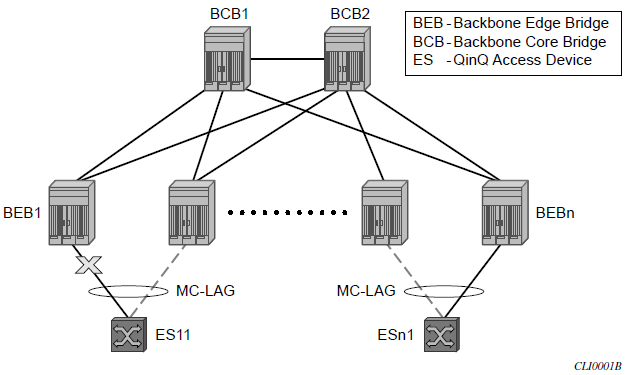The Nokia PBB implementation allows the operator to use a native Ethernet infrastructure as the PBB core. Native Ethernet tunneling can be emulated using Ethernet SAPs to interconnect the related B-VPLS instances. This kind of solution might fit certain operational environments where Ethernet services was provided in the past using QinQ solution. The drawback is that no LDP signaling is available to provide support for Access Multi-homing for Epipe (pseudowire Active/Standby status) or I-VPLS services (LDP MAC Withdraw). An alternate solution is required.
A PBB network using Native Ethernet core is shown in the following figure. MC-LAG is used to multi-home a number of edge switches running QinQ to PBB BEBs.

The interrupted line from the MC-LAG represents the standby, inactive link; the solid line is the active link. The BEBs are dual-homed to two core switches BCB1 and BCB2 using native Ethernet SAPs on the B-VPLS side. Multi-point B-VPLS with MSTP for loop avoidance can be used as the PBB core tunneling.